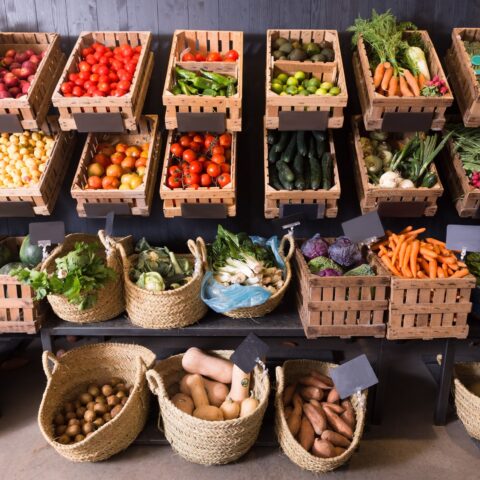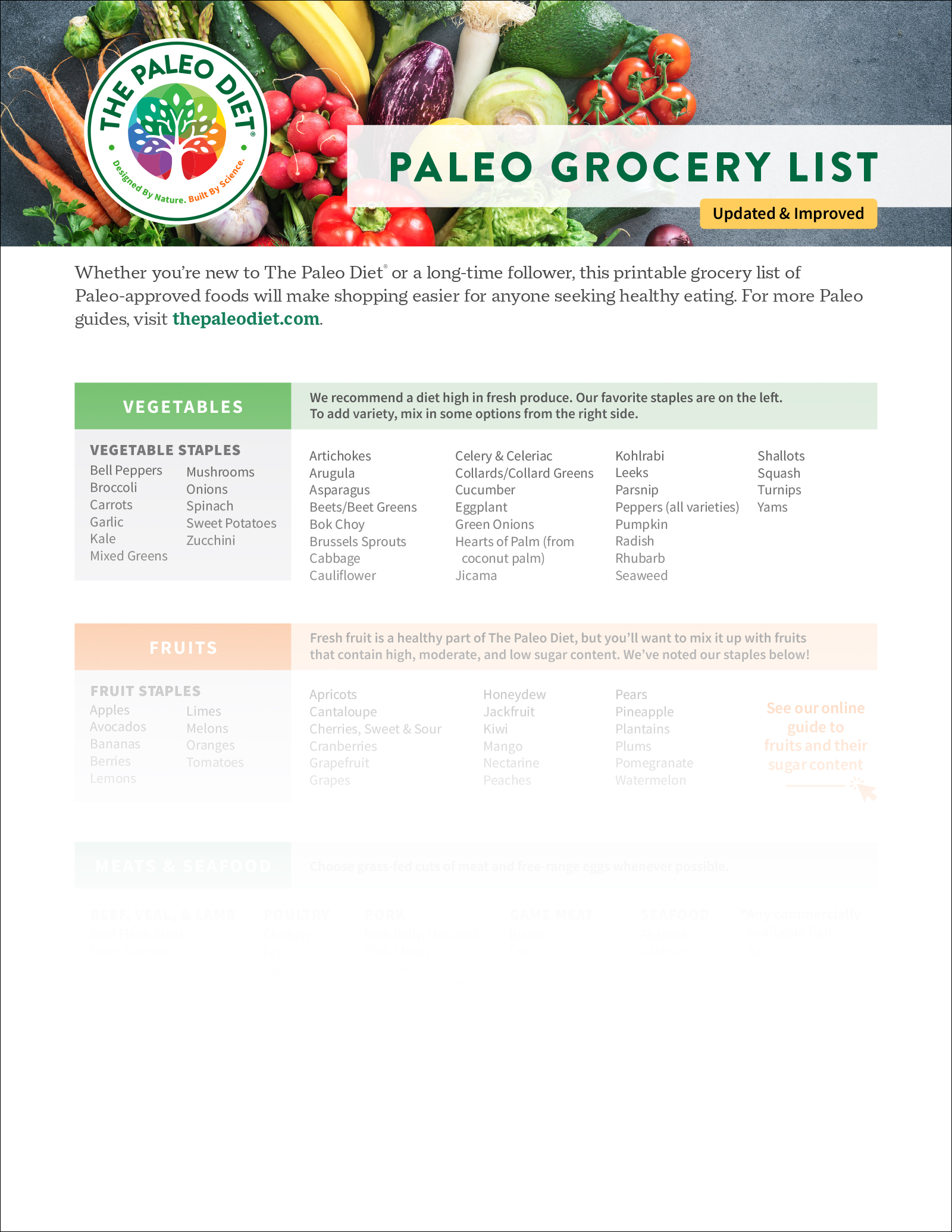Is Organic Food Worth It?

Organic food functions less as a category these days and more as a cultural mirror. It reflects how we assign value to food, who we trust to grow it, and what we’re willing to pay in order to feel safe. Depending on the context, it can signal care, excess, integrity, or elitism.
What began as a well-meaning agricultural distinction—an effort to clarify how food was grown—has since absorbed the weight of conflicting cultural expectations, conscripted into something far more symbolic, and far more complicated. The organic label was never designed to carry all of that. Yet over time, those meanings have been attached to it.
The U.S. Department of Agriculture’s (USDA) Organic seal, implemented in 2002, codified decades of grassroots efforts. Before it showed up on packages and store signs, organic began as a pushback against the chemical-heavy farming that followed World War II.
Over time, it became a legal standard, a cultural signal, and yes, a marketing tool—but those additions didn’t erase where it started. It came from seed savers, soil scientists, environmental activists, food sovereignty organizers—people who understood that how something is grown cannot be separated from what it does to a body, a community, or an ecosystem.
What Does Organic Mean?
The organic movement was never intended to bear the weight of solving every problem in our food system. What it did do—quietly and steadily, however—was give shape to a conversation that had long existed without legal footing. It laid the groundwork for newer frameworks to build upon that are becoming more vitally appreciated or investigated today: regenerative practices, fair trade sourcing, nutrient-dense standards, additive bans.
Organic became a foundation—a first draft of food system reform, if you will—not the final verdict. To judge it by what it never claimed to be is to overlook the fact that it made so much of what came next possible.
And yet, confusion remains, understandably so. Many consumers assume “organic” implies nutritional superiority. Others simply dismiss it outright when they see the seal stamped on items like boxed macaroni or fruit-flavored gummy snacks. Both responses flatten what the label actually stands for. Organic refers to a production method—not a final nutritional value or degree of processing. A certified organic gummy bear is still, in fact, a gummy bear.
What organic does promise is a reduction in certain synthetic inputs: no synthetic pesticides or herbicides, no genetically modified organisms (GMOs), no synthetic fertilizers or sewage sludge, and no routine use of antibiotics or synthetic growth hormones in animals. It’s a systems-level approach to agriculture rather than a shortcut to health, which is a bit harder to explain in a 15- to 30-second soundbite.
What the Science Says
Meta-analyses have found that organic crops tend to contain higher levels of antioxidants and polyphenols,1 and that organic animal products from pasture-based systems often contain better omega-3 profiles and fewer antibiotic residues.2 While a widely cited Stanford meta-analysis found limited evidence for the nutritional superiority of organic foods, it acknowledged consistent reductions in pesticide residues.3 Later studies have built upon this foundation with more refined methodologies and broader datasets.
A 2024 review highlighted associations between organic food consumption and reductions in obesity, improved blood nutrient profiles, and decreased risk of certain conditions like preeclampsia and non-Hodgkin lymphoma. However, the authors note that current evidence remains limited by study design, confounding variables, and short durations—meaning causation cannot yet be confirmed.⁴
Meanwhile, researchers like Carl Winter have emphasized that pesticide residue levels on conventional produce remain well below established safety thresholds.5 These perspectives are not mutually exclusive, however. Instead, they show that organic food often improves certain markers of exposure and quality, but also that safety cannot be reduced to a single metric.
Thinking it’s not serious enough to change your ways just yet? Empirical government data from the USDA’s 2023 Pesticide Data Program reinforces the sense of urgency. In 2022, more than 72% of conventional produce sampled contained detectable pesticide residues, though most remained below legal thresholds.
However, existing regulatory thresholds often fail to address the compounding effects of multiple pesticide residues, including how low-dose exposures—particularly those with hormone-mimicking properties—can interact over time in ways not fully accounted for by traditional toxicology models. This includes chemicals shown to interfere with endocrine signaling pathways even at levels previously deemed safe.
Research by the Endocrine Society and others underscores that endocrine-disrupting chemicals often follow non-monotonic dose-response curves, meaning smaller doses may exert different or more biologically active effects than higher ones.6 A 2023 systematic review of prospective studies found that higher dietary pesticide exposure—especially to chemical groups restricted or banned under certified organic standards—was linked to increased risk of several chronic conditions, including non-Hodgkin lymphoma, type 2 diabetes, cardiovascular disease, and all-cause mortality.7 While causality cannot yet be confirmed, the findings reinforce the need to examine both the cumulative impact and the regulatory gaps around chronic, low-level exposures.
When to Prioritize Organic Food: A Practical Guide
To make meaningful decisions, consumers need both context and precision. When budgets are limited or when organic availability is inconsistent, understanding where it matters most can offer much needed clarity. Not all the foods listed below fall within the guidelines of The Paleo Diet®, but they’ve been included to help consumers across eating styles make better-informed choices—especially when feeding children, managing chronic illness, or navigating limited access to fresh foods.
High-Residue Produce
“High-residue” refers to foods that consistently test high for pesticide levels in USDA data. These items have thin skins or are eaten whole, which increases exposure risk. Choosing organic versions of the below foods can significantly reduce dietary exposure, especially in children.8–9
- Strawberries
- Spinach
- Bell Peppers
- Apples
- Grapes
- Potatoes
A 2024 meta-analysis of 147 studies found that while nearly one-third of comparisons showed nutritional advantages in organic foods, the majority either showed no significant difference or yielded inconsistent results—suggesting that nutritional superiority cannot be generalized and depends heavily on the food type and nutrient in question.10
High-Fat Animal Products
Butter, cheese, and fatty meats can accumulate fat-soluble contaminants like dioxins and PCBs. These substances bind to fat and persist in the food chain. Organic options reduce this risk by regulating what the animals eat, and are particularly relevant for pregnant individuals and those who are immunologically vulnerable.
Daily Staples
Items like milk, eggs, leafy greens, and staple fruits eaten frequently carry cumulative exposure risk. For households with toddlers, aging parents, or anyone managing chronic illness, choosing organic for frequently consumed foods may help reduce exposure to low-dose pesticide residues and other agricultural contaminants. These exposures contribute to overall toxic load—the cumulative burden of chemical substances the body must process, detoxify, or store over time.
Note: A small but important 2014 study demonstrated reduced urinary pesticide metabolites after switching to an organic diet for just six days.11 The study’s small size and its retail funding source limit generalization but provide a signal worth noting.
When in Doubt, Buy Whole
Where organic options are unavailable or unaffordable, choose fresh, whole foods and prioritize transparency. Ask how food was grown or raised. Familiarity with growing seasons can stretch your dollar and improve nutrition. Choosing a bunch of fresh cilantro instead of a pre-washed, bagged “organic mix” may offer better nutrition and value.
Contextualizing the Dirty Dozen
Resources like the Environmental Working Group’s (EWG) Dirty Dozen and Clean Fifteen are useful, but not flawless. Their rankings emphasize how often pesticide residues are detected, rather than the toxicity or quantity. They also don’t account for synergistic effects, geographic differences, or how food is prepared.5
While EWG’s Dirty Dozen highlights how often residues are found, it doesn’t account for dose, chemical type, or population sensitivity. Risk depends not just on detection but on cumulative exposure, synergistic effects, and physiological vulnerability.
These lists can be helpful guides—especially when selecting high-residue produce for young children, pregnant individuals, or those with chronic conditions. But they are reference points, not hard rules. When organic or low-residue options aren’t accessible, a conventionally grown vegetable is still nutritionally valuable—especially when weighed against ultra-processed alternatives.
While some conventional produce may contain trace pesticide residues or antinutrients, they also deliver fiber, vitamins, and phytonutrients that are essential to human health. The goal isn’t flawlessness—it’s progress toward a diet rooted in nutrient density, bioavailability, and practical access.
Growing Beyond the Organic Movement
Organic’s greatest contribution may not be purity but precedent. It has given people language to talk about food systems, and that language has seeded dozens of other reforms. When critics fault it for failing to “fix” the food system, they overlook what it achieved. Organic wasn’t supposed to serve as the one magic solution—it cleared a path, even if imperfect. It was the first domino that gave shape to a much larger, more complex movement.
This path, though sometimes bureaucratic and uneven, helped birth the regenerative agriculture movement, gave structure to the fair-trade conversation, and laid the groundwork for emerging standards that address ultra-processing and ingredient integrity.
Organizations like the Organic Trade Association and IFOAM – Organics International have worked to evolve the definition of organic with transparency, evidence, and responsiveness to global food system needs. Meanwhile, USDA Organic certification cost-share programs represent a rare example of federal support aimed at easing barriers for smaller-scale, diversified, and historically underserved farmers.
Critique is still essential—but only when it fuels solutions. Stronger standards, informed policies, resilient infrastructure, and collaborative leadership are all within reach. And for those working in food systems, that includes naming the hard truths: land access, equity in farming, and supply chain sovereignty are structural imperatives.
Certifications are Collaborators, Not Competitors
Organic may have laid the foundation, but it’s no longer the only standard shaping our food system. In today’s evolving label landscape, a variety of certifications are working—often in parallel—to raise the bar for transparency, safety, sustainability, and nutritional integrity. Each brings a unique lens. Together, they offer a more complete picture:
- USDA Organic prioritizes input reduction and environmental stewardship. While their standard has codified meaningful protections, it has also faced criticism over inconsistencies. These tensions highlight the need for ongoing vigilance and policy reform within the organic landscape.12,13
- Regenerative Organic Certified (ROC) expands upon organic by including standards for soil health, animal welfare, and social fairness.
- Non-GMO Project Verified centers on transparency around genetically modified organisms and bioengineered ingredients.
- Non-UPF Verified is a newly launched initiative from Non-GMO Project focused on limiting ultra-processing, increasing transparency around additives, and reducing reliance on fractionated or industrial ingredients.
- The Paleo Diet Certifications emphasize nutrient density, minimal processing, ingredient integrity, and clear processing standards.
No single certification captures every nuance. But viewed collectively, they form a network of standards that—when aligned—can accelerate meaningful change. Collaboration across these frameworks holds the potential to clarify choices for consumers, reduce friction between values, and model a more unified approach to food system transformation.
Expanding Access without Moralizing Food
Millions of Americans live in communities where fresh food is scarce, prices are inflated, or entire categories of nourishing ingredients are functionally out of reach. In these realities, conversations about organic food—no matter how well-intentioned—can feel disconnected or even dismissive. Health advocacy demands social awareness as much as it does scientific accuracy.
Localized efforts like Double Up Food Bucks, mobile markets, or subsidized CSA programs offer pathways toward better food access without attaching moral weight or shame. What turns a label into a weapon are the systems that limit who can access it. Organic wasn’t designed to be a gatekeeper—but in practice, it can function like one when treated as the only marker of good food. Public health messaging must champion optimal nutrition as a right, not a luxury—grounded in nourishment, dignity, and practical pathways forward, rather than perfectionism.
Where to Go from Here
At The Paleo Diet, we recognize USDA Organic as one important layer in a broader foundation for food system change. It aligns with our commitment to nutrient density, ingredient integrity, and transparent sourcing. Every shopper deserves a clear understanding of what they’re buying and why it matters.
If you’re standing in front of a shelf wondering what does matter, you may consider starting with the following action steps.
- Prioritize organic when it meaningfully reduces exposure—especially for high-residue produce, high-fat animal products, and frequently consumed items. This is particularly relevant for children, pregnant individuals, and those with chronic health conditions.
- When organic isn’t available or affordable, focus on food quality and transparency. Choose whole, minimally processed foods where possible, and be mindful of preparation methods that may reduce contaminant levels (like washing, peeling, or cooking).
- Review ingredient lists with discernment. Seek out products low in added sugars, synthetic additives, and industrial processing markers; while recognizing that “ultra-processed” is a broad term still being defined across disciplines.
- Build relationships with growers and retailers when possible. Local knowledge, seasonal familiarity, and sourcing transparency can all enhance nutritional and ecological value—regardless of certification.
- Support brands and food systems that demonstrate transparent, documented commitments to soil health, animal welfare, human labor, and ingredient integrity. Labels are helpful, but informed pattern recognition matters more than perfection.
Frequently Asked Questions
Is organic food worth it?
Organic food isn’t inherently more nutritious in every case, but for some foods, it can offer fewer pesticide residues, lower synthetic additive exposure, and better environmental practices. Nutrient density depends on many factors including soil health, varietals, freshness, and processing. Choosing organic is one way to reduce cumulative chemical exposures, particularly for foods high in fat or those consumed daily.
Isn’t organic just another marketing label?
It’s more than that. While it has become a marketing term in some spaces, organic originated as a grassroots response to chemical agriculture. It codified farming and food production practices that minimize synthetic inputs, protect ecosystems, and support long-term soil health. It’s imperfect and evolving, but remains a foundational standard for input reduction and transparency.
Does The Paleo Diet support organic food?
Yes. We support USDA Organic as one piece of a more transparent, health-forward food system. It aligns with our values of nutrient density, environmental stewardship, and ingredient integrity. Our certification standards often go further by addressing ultra-processing and nutrient quality, but we see organic as a critical baseline—not a silver bullet, but a meaningful tool.
If I can’t afford all organic, what should I prioritize?
Start with foods you eat daily, items high in fat, and produce known for high pesticide residues. Organic is especially impactful when buying food for young children, the elderly, or those with health conditions. But don’t let perfection interfere with nourishment. A conventionally grown vegetable is still better than no vegetable at all.
References
- Barański, M., Średnicka-Tober, D., Volakakis, N., Seal, C. J., Sanderson, R., Stewart, G. B., Benbrook, C. M., Biavati, B., Markellou, E., Giotis, C., Gromadzka-Ostrowska, J., Rembiałkowska, E., Skwarło-Sońta, K., Tahvonen, R., Janovská, D., Niggli, U., Nicot, P., & Leifert, C. (2014). Higher antioxidant and lower cadmium concentrations and lower incidence of pesticide residues in organically grown crops: A systematic literature review and meta-analyses. British Journal of Nutrition, 112(5), 794–811. https://doi.org/10.1017/S0007114514001366
- Średnicka-Tober, D., Barański, M., Seal, C. J., Sanderson, R., Benbrook, C. M., Steinshamn, H., Gromadzka-Ostrowska, J., Rembiałkowska, E., Skwarło-Sońta, K., Eyre, M. D., Cozzi, G., Krogh Larsen, M., Jordon, T., Niggli, U., Sakowski, T., Calder, P. C., & Leifert, C. (2016). Composition differences between organic and conventional meat: A systematic literature review and meta-analysis. British Journal of Nutrition, 115(6), 994–1011. https://doi.org/10.1017/S0007114515005073
- Smith-Spangler, C., Brandeau, M. L., Hunter, G. E., Bavinger, J. C., Pearson, M., Eschbach, P. J., Sokoloff, J., & Bravata, D. M. (2012). Are organic foods safer or healthier than conventional alternatives? A systematic review. Annals of Internal Medicine, 157(5), 348–366. https://doi.org/10.7326/0003-4819-157-5-201209040-00007
- Rahman, A., Baharlouei, P., Koh, E. H. Y., Pirvu, D. G., Rehmani, R., Arcos, M., & Puri, S. (2024). A Comprehensive Analysis of Organic Food: Evaluating Nutritional Value and Impact on Human Health. Foods, 13(2), 208. https://doi.org/10.3390/foods13020208
- Winter, C. K., & Katz, J. M. (2011). Dietary exposure to pesticide residues from commodities alleged to contain the highest contamination levels. Journal of Toxicology, 2011, Article ID 589674. https://doi.org/10.1155/2011/589674
- Vandenberg, L. N., Colborn, T., Hayes, T. B., Heindel, J. J., Jacobs, D. R., Jr., Lee, D. H., Shioda, T., Soto, A. M., vom Saal, F. S., Welshons, W. V., Zoeller, R. T., & Myers, J. P. (2012). Hormones and endocrine-disrupting chemicals: Low-dose effects and nonmonotonic dose responses. Endocrine Reviews, 33(3), 378–455. https://doi.org/10.1210/er.2011-1050
- Baudry, J., Rebouillat, P., Samieri, C., Berlivet, J., & Kesse-Guyot, E. (2023). Dietary pesticide exposure and non-communicable diseases and mortality: A systematic review of prospective studies among adults. Environmental Health, 22(1), 76. https://doi.org/10.1186/s12940-023-01020-8
- Baker, B. P., Benbrook, C. M., Groth, E., III, & Benbrook, K. L. (2002). Pesticide residues in conventional, integrated pest management (IPM)-grown and organic foods: Insights from three US data sets. Food Additives & Contaminants, 19(5), 427–446. https://doi.org/10.1080/02652030110113799
- United States Department of Agriculture. (2023). Pesticide Data Program Annual Summary, Calendar Year 2022. https://www.ams.usda.gov/sites/default/files/media/2022PDPAnnualSummary.pdf
- Thaise de Oliveira Faoro, D., Artuzo, F. D., Rossi Borges, J. A., Foguesatto, C. R., Dewes, H., & Talamini, E. (2024). Are organics more nutritious than conventional foods? A comprehensive systematic review. Heliyon, 10(7), e28288. https://doi.org/10.1016/j.heliyon.2024.e28288
- Oates, L., & Cohen, M. (2014). Reduction in urinary organophosphate pesticide metabolites in adults after a week-long organic diet intervention. Environmental Research, 132, 105–111. https://doi.org/10.1016/j.envres.2014.03.021
- Guthman, J. (2014). Agrarian dreams: The paradox of organic farming in California (2nd ed.). University of California Press. https://doi.org/10.1525/9780520959132
- National Organic Standards Board. (2023). National Organic Standards Board meetings archive: 2023 meeting materials. U.S. Department of Agriculture. https://www.ams.usda.gov/rules-regulations/organic/nosb/meetings
Griffin McMath, ND
With a background in clinical practice, advocacy, and behavior change communication, Dr. McMath is passionate about advancing health literacy and empowering people to make informed decisions.
More About The Author




